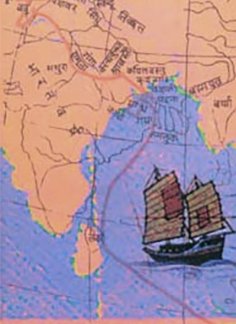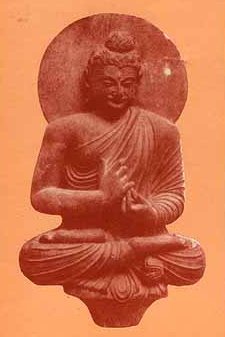Nahapana, Nahāpana: 3 definitions
Introduction:
Nahapana means something in Buddhism, Pali, the history of ancient India. If you want to know the exact meaning, history, etymology or English translation of this term then check out the descriptions on this page. Add your comment or reference to a book if you want to contribute to this summary article.
India history and geography
Source: academia.edu: The Chronology of Ancient Gandhara and BactriaNahapana, the son of Bhumaka reigned around 620-585 BCE. Two inscriptions of Nahapana are probably dated in the year 41 (595 BCE) & 46 (589 BCE) of the Shalivahana era (636 BCE). Ushavadata or Rishabhadatta, the son of Dinika married Dakshamitra, the daughter of Nahapana. Saka Mahakshatrap Chashtana, a junior contemporary of Nahapana also founded his independent kingdom in Gujarat and invaded on Ujjain and Maharashtra. Thus, Chashtana founded a powerful Saka kingdom in western India and established an epoch in 583 BCE that came to be known as the Saka era.

The history of India traces the identification of countries, villages, towns and other regions of India, as well as mythology, zoology, royal dynasties, rulers, tribes, local festivities and traditions and regional languages. Ancient India enjoyed religious freedom and encourages the path of Dharma, a concept common to Buddhism, Hinduism, and Jainism.
Languages of India and abroad
Pali-English dictionary
Source: BuddhaSasana: Concise Pali-English Dictionarynahāpana : (nt.) bathing or washing (someone else).
Source: Sutta: The Pali Text Society's Pali-English DictionaryNahāpana, (nt.) bathing, washing (trs.) D. I, 7, 12; A. I, 62, 132; II, 70; IV, 54; It. 111 (ucchādana+); VvA. 305 (udakadāna+). (Page 348)

Pali is the language of the Tipiṭaka, which is the sacred canon of Theravāda Buddhism and contains much of the Buddha’s speech. Closeley related to Sanskrit, both languages are used interchangeably between religions.
See also (Relevant definitions)
Full-text: Bhumaka, Ucchadana, Parimaddana, Cashtana, Ramacandra, Candramsha, Sadacandra, Vamacandra.
Relevant text
Search found 1 books and stories containing Nahapana, Nahāpana; (plurals include: Nahapanas, Nahāpanas). You can also click to the full overview containing English textual excerpts. Below are direct links for the most relevant articles:
Bhesajjakkhandhaka (Chapter on Medicine) (by Hin-tak Sik)
Medical Principles (In Early Buddhist Scriptures) < [Chapter 3 - Concepts of Health and Disease]